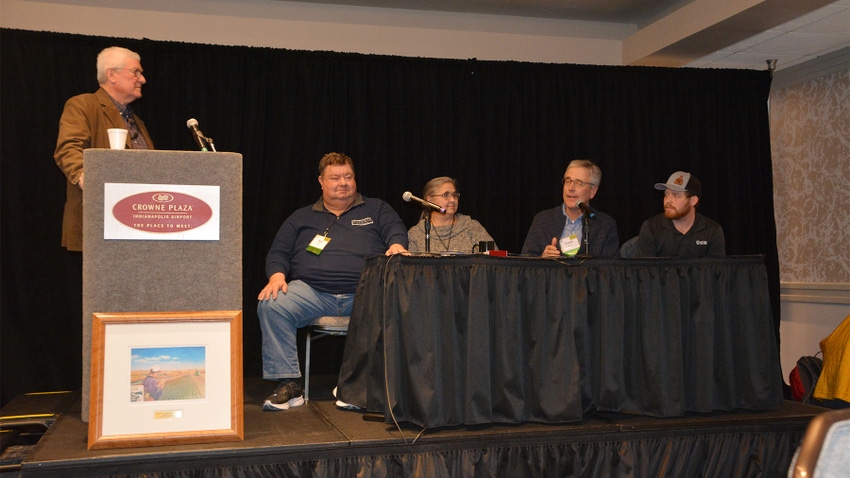
When no-tillers and cover croppers get together, conversation flows. Listening in can be a good way to learn.
Barry Fisher moderated a panel of cover croppers at the Midwest Cover Crop Council annual meeting. Fisher, Fisher Soil Health LLC, Putnam County, Ind., spent most of his career working with farmers on conservation tillage through the Natural Resources Conservation Service. The panel included:
Tom and Ruth Hackman, Vallonia, Ind. The Hackmans and their family raise 2,000 acres of row crops, plus watermelons for wholesale distribution, cantaloupes, sweet corn and other produce crops in south-central Indiana. The family also operates a produce market.
Frank Bender, Poseyville, Ind. Bender has been 100% no-till for 15 years. About 50% of his land in Posey County in the toe of Indiana is highly erodible.
Evan Schuette, Breese, Ill. Schuette farms and raises cattle in Clinton County in southern Illinois. Schuette Signature Beef markets 40 to 50 head of freezer beef per year. Schuette also no-tills 400 acres with cover crops.
Here is their discussion:
What primary jobs should cover crops do?
Ruth Hackman: We want to keep sand from blowing. We don’t want dust storms either.
Tom Hackman: They help make our desert-like, sandy hills more productive. Today, we can grow 200 bushels of corn per acre on those soils.
Bender: Achieving erosion control is No. 1. About half our soils are highly erodible due to slope — we don’t have sands. Second, we want water going into the soil. What comes off should be clear, not muddy.
Schuette: My farm was run down when I bought it in 2018. Potassium levels were the lowest my retailer ever saw. I grow cover crops and apply poultry manure to make soils productive again. Plus, we want to graze cover crops in spring and fall.
Has anything happened since going to cover crops that you didn’t expect?
Tom Hackman: I didn’t think we could plant into green standing cover crops. Yet it works better than planting into dead brown cover because of fewer problems with material balling up.
Ruth Hackman: Voles and moles! They’re a problem without a good solution. We promote predators.
Bender: Moles and voles are why we don’t allow coyote hunting. Our biggest headache, though, is slugs. There is a bait, but it’s very expensive. About the time you decide to apply it, slugs don’t show up.
Schuette: We planted cereal rye late and didn’t see growth. Yet there was a green carpet by spring. Where we have cover crops, we don’t see as many weeds.
What might you try in the future?
Tom Hackman: We might bring legumes into cereal rye cover for our produce crops to grow nitrogen.
Ruth Hackman: We’re developing field borders and encouraging growth of pollinator plants. We hire people to bring in beehives for melons, and it is expensive.
Bender: I would like to try another oilseed crop, like canola. It might improve our status in the carbon market.
Schuette: I want to do trials with roller crimping and planting green. We need to further investigate this option.
Read more about:
No tillAbout the Author(s)
You May Also Like




